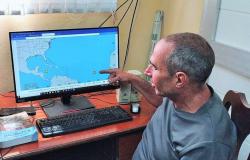This Friday, the statutes were signed to establish the corporation that creates the Lithium and Salares Technological and Research Institute.
The National Institute of Lithium and Salares will be a non-profit private law corporation created to generate, apply and share knowledge, technology and information.
The headquarters will be established in the Antofagasta Region and will have a headquarters in Atacama, leaving open the possibility, in the future, of creating headquarters in other regions where salt flats exist, prior approval of the board of directors.
The National Institute of Lithium and Salt Flats is founded by the ministries of: CTCI, Mining, Environment and Corfo.
What will the National Institute of Lithium and Salt Flats do?
The two headquarters of this ITIP, in Antofagasta and Copiapó, will have a staff preliminary estimated at 43 people including researchers, technicians and administrative staff for the fifth year of operation.
It is estimated that, from the seventh year onwards, the financing required for the regime will be $2.8 billion annually.
Another point of great relevance is that the ITIP is going to establish association agreements with universities and centers in the regions, to be able to carry out the lines of research that have been assigned to it and those that, in the future, its board of directors defines.
The preliminary lines of work are:
- Salt Flats: Research on salt flat characterization and dynamics.
- Technology: Evaluation and development of technology for the exploitation of salt flats and new products.
- Communities: Research on the socio-cultural impact of the lithium industry and salt flats.
- Citizen science:
- Knowledge dissemination program.
- Science and technology with the community.
- Knowledge exchange.
This ITIP will allow research from productive topics such as new methods of brine extraction and obtaining lithium, special uses in batteries other than traditional ones, recovery and reuse of materials associated with the lithium value chain, to biodiversity associated with salt flats, modeling of the impact of salt flat exploitation processes, efficient monitoring of ecosystems, going through social and environmental conflicts in the different basins, the relationship between lithium mining and territorial development or the balance between emerging technologies and their possible socio-economic effects and impacts. -environmental.
Financing of the National Institute of Lithium and Salares
During this year, work will be done to establish a 2025 budget line, dedicated to this institute, in order to ensure continuous financing for its administrative operation and infrastructure.
Furthermore, to finance the expenses associated with specific projects, it has been proposed by the Lithium technical table to allocate between 20-25 million dollars from Lithium Contracts.
These resources will allow the development, within a period of up to 10 years, of lines of work that generate goods of public interest.
Additionally, this ITIP will own the results obtained from the execution of 6.3 million dollars from ANID R&D projects, which will be awarded at the end of June 2024.
Along the same lines, the Institute will be the repository of the results of CORFO projects for 15 million dollars of R&D resources from the Lithium Contract, tendered to develop projects in hydrogeology and direct lithium extraction, which will be transferred to the Institute once is in regime.
The Institute should also explore other sources of financing, including regional support for infrastructure projects, participation in public R&D competitions, and private contributions.






